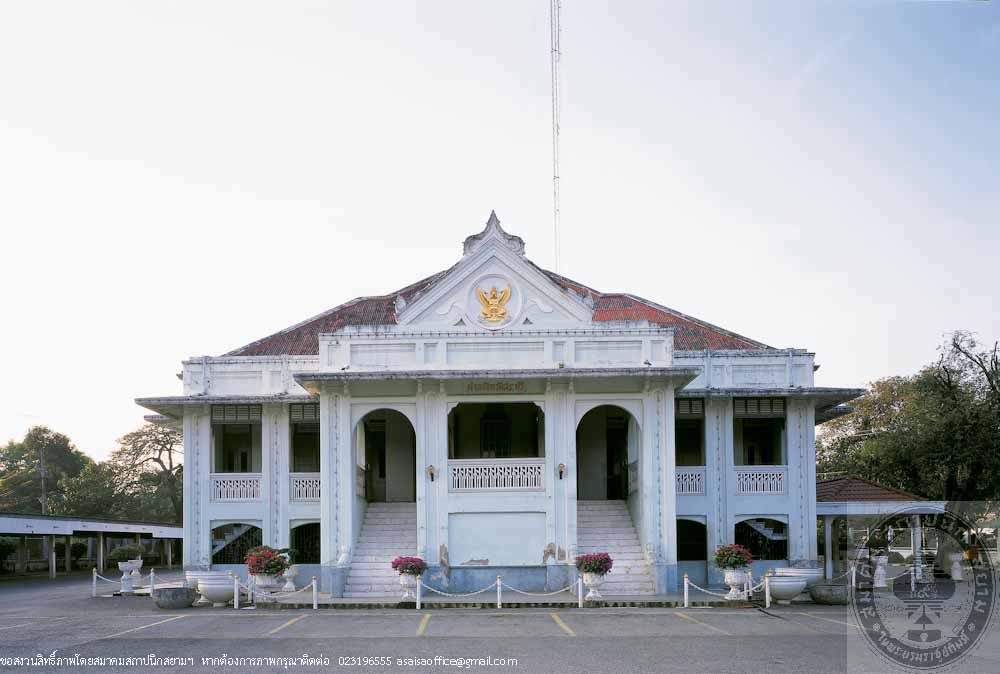ศาลจังหวัดสระบุรี
ศาลจังหวัดสระบุรี
ที่ตั้ง ถนนพิชัยรณณรงค์สงคราม ตำบลปากเพรียว อำเภอเมือง จังหวัดสระบุรี
สถาปนิก/ผู้ออกแบบ -
ผู้ครอบครอง กระทรวงยุติธรรม
ปีที่สร้าง พ.ศ. 2472
ปีที่ได้รับรางวัล พ.ศ. 2536
ประวัติ
ศาลจังหวัดสระบุรี เป็นตัวอย่างหนึ่งของสถาปัตยกรรมและการตกแต่งแบบนีโอคลาสสิค ยุครัชกาลที่ 7 รูปแบบเป็นอาคารก่ออิฐถือปูน 2 ชั้น หลังคาปั้นหยา มีมุขทางด้านหน้า หน้าจั่วมีปูนปั้นรูปครุฑเหยียบเมฆสีทองในวงกลม
อาคารนี้เป็นอาคารที่ได้สร้างขึ้นเมือง พ.ศ. 2472 แทนศาลเดิมที่ถูกไฟไหม้ เมื่อแรกสร้างเป็นศาลขนาด 3 บัลลังก์ ต่อมาเมื่อมีความต้องการใช้สอยเพิ่มมากขึ้น ก็มีการขยายต่อเติมโดยสร้างอาคารใหม่ต่อออกไปทางด้านหลังจนกลายเป็นศาลขนาด 15 บัลลังก์ อย่างไรก็ดี การต่อเติมดังกล่าวได้กระทำอย่างระมัดระวังมิให้เสียรูปแบบและภาพรวมของอาคารศาลเดิม
เนื่องจากอาคารนี้มีการใช้สอยมาโดยตลอด จึงมีการซ่อมแซม ปรับปรุง และต่อเติมมาเป็นระยะลำดับโดยเริ่มตั้งแต่ปี พ.ศ. 2508 ต่อเติมอาคารทางทิศใต้ ต่อมาใน พ.ศ. 2521 ได้ซ่อมแซมและต่อเติมอาคารศาลหลังเดิมอีกครั้ง จากนั้นมีการซ่อมแซม และปรับปรุงภายในอาคารครั้งหลังสุดคือในปี พ.ศ.2543 และได้ใช้งานมาจนปัจจุบัน

ศาลจังหวัดสระบุรี
-

ศาลจังหวัดสระบุรี
The Saraburi Provincial Court
Location Phichai Ronarongsongkhram Road, Tambon Pak Phriao, Amphoe Mueang,Saraburi Province
Architect/Designer Unknow
Proprietor Ministry of Justice
Date of Construction 1929 AD.
Conservation Awarded 1993 AD.
History
The Saraburi Provincial Court is an example of a neoclassic architecture and decoration of King Rama VII period. It is a 2-storey brick masonry building with hipped roof and a front porch. The pediment is decorated with stucco depicting a Garuda standing on golden clound inside a circle.
The present building was built in 1929 to replace the old court that was destroyed by fire. At first built, there were only 3 courtrooms. Later, when requirements increased, it was extended to the rear so that the courtrooms are added to 15 in total. Nevertheless, extensions have been carried out with caution so that it would not damage the original overall design of the building.
Due to continuous use, this building has undergone several periods of restoration and extentions. The latest work was interior redecoration in 2000.